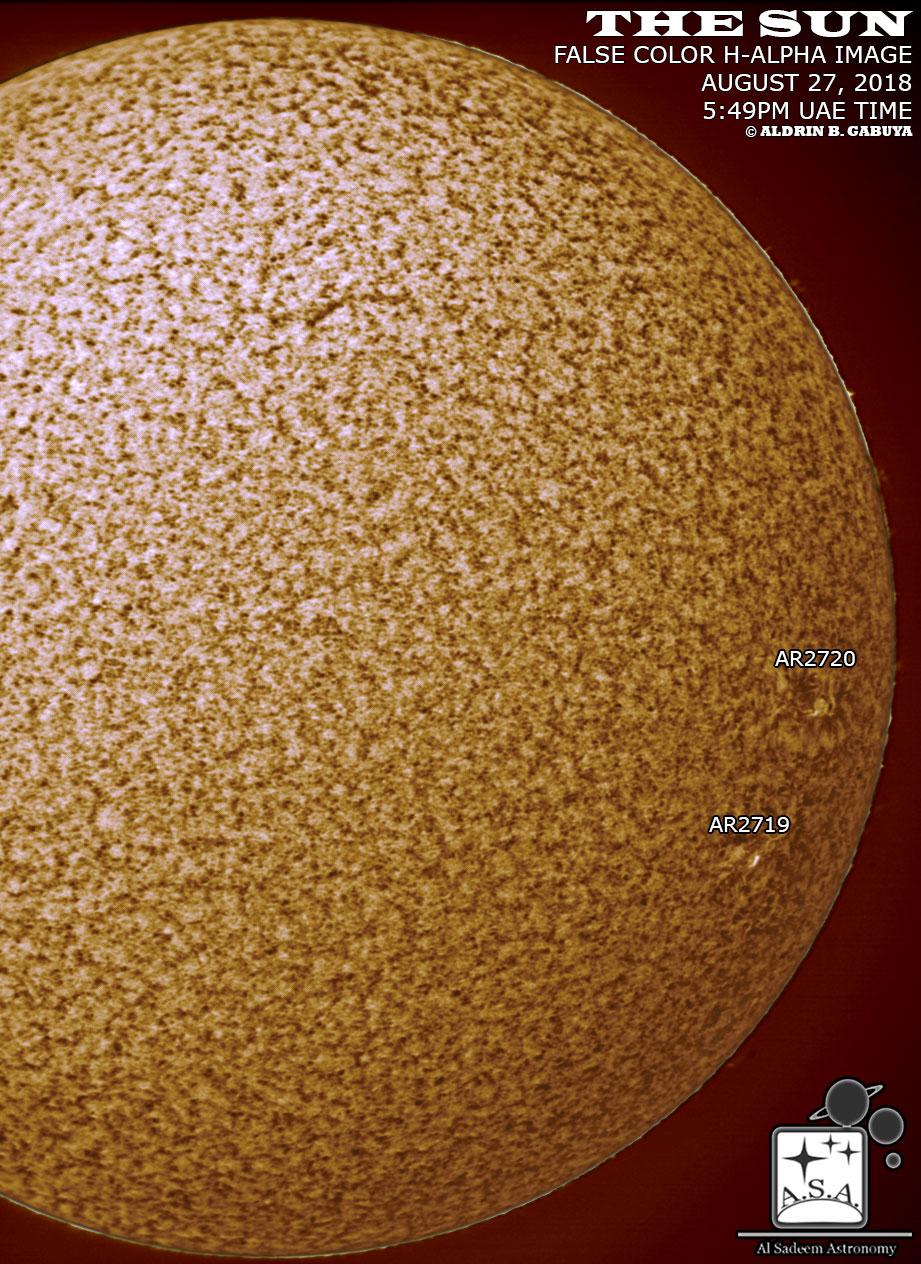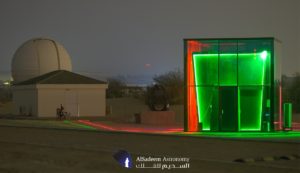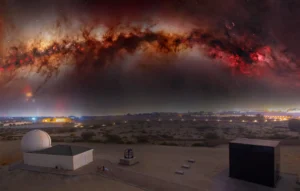Here are today’s solar images taken from Al Sadeem Observatory, August 27, 2018.
The sky was mostly clear (some high cloud passes) with slight to moderate air turbulence making the seeing and transparency average at the time these images were taken.
Both visible sunspot groups AR2719 and AR2720 have shown gradual sunspot structure decay over the past 24 hours. Both produced few minor B-class solar flares and is expected to remain stable in the next few days as it approaches the western limb. The latest sunspot number (based on visual count and Wolf number calculation) is 24. Other solar features include few eruptive prominences, especially the ones at the northeastern and southeastern limb, and a fairly large filament at the Sun’s northern hemisphere as distinctively captured in H-alpha imagery.
Space weather agencies* forecast solar activity to remain at very low levels with chances of weak X-ray fluxes or flares ranging up to B-class (minimal chance of isolated C-class) intensity, mainly from the two upper-mentioned active regions. The extent of the frequency and intensity of the Sun’s activity will highly depend on the magnetic flux fluctuations happening in the visible ARs in the coming days. Close monitoring is being conducted by numerous space weather agencies for any significant development.
*Technical reports courtesy of Solar Influence Data Center (SIDC), NOAA-Space Weather Prediction Center (NOAA-SWPC)








